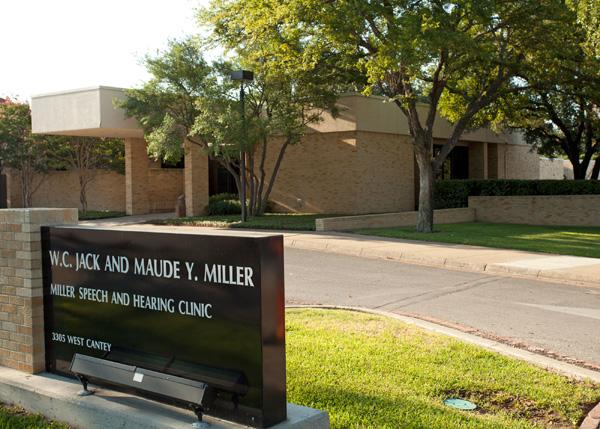TCU speech pathology majors in the Harris College of Nursing and Health Sciences are getting hands-on training in another area of the medical field: audiology. At the Miller Speech and Hearing Clinic, located on the corner of Stadium Drive and West Cantey Street, six speech pathology students under the direction of Tracy Burger, an assistant professor of professional practice in the Harris College, are administering hearing exams to members of the Fort Worth community. Speech pathology and audiology may not seem to be linked at first glance, but Burger said the two fields interact closely with each other. “Hearing is so related with talking and communicating because you have to make sure that the message is received,” Burger said. “Audiology is a sister field with speech pathology.” “People who don’t have access to listening…their speech and language development, especially children, is significantly delayed,” Burger said. To grasp a better understanding of the work the clinic performs, take the screening performed Tuesday by Burger and senior Shannon Howard on a patient. All those involved agreed to let TCU360 observe the screening. Assessing the patient Ella Pate, a bright-eyed and blonde-haired two-year old girl, walked into the Miller Clinic with her mother, Meagan Newsome, on Tuesday, Nov. 3. Newsome was concerned about her daughter’s hearing and said Ella sometimes seemed to have problems listening. Burger and Howard proceeded to get Ella’s full patient history, from previous doctor visits to current allergies. Howard peered into Ella’s ears and performed a litany of diagnostic tests, each designed to gauge how the toddler’s eardrums were reacting to stimuli. The task seems simple enough to an outsider, but on a toddler, administering the tests can be a challenge. Even with Ella, who was remarkably well-behaved, Howard had to practice her skills at managing patients, something she said is simply part of the learning experience. “I’ve had two kids so far, and one older adult, a stroke patient,” Howard said. “A lot of times, it’s like ‘this is the [hearing] test, and this is what it does,’ and that’s easy to memorize for a test, but it’s completely different to do on a real-life client.” Let’s play “find the duck!” For a typical patient, Howard and Burger would both leave the soundproof screening room and head over to a neighboring room with a viewing area to allow them to see the patient. With Ella, Howard stayed behind to keep the toddler focused, and Burger administered the test from the neighboring room. The test is designed to gauge the frequencies and decibel levels a person can hear in each ear. On an adult patient, this is done with a recorded series of beeps and other sounds. For Ella, Burger and Howard had to improvise. They encouraged Ella to throw an object in the direction of a duck located on her left or a hamster located on her right, depending on where the sound came from. Burger alternated between playing white noise at different frequencies and volumes through a speaker and giving vocal commands to Ella in order to elicit a response. This allowed Burger and Howard to determine Ella’s baseline hearing thresholds. “What we have,” Burger said, “is some information about her listening skills. Overall, she has pretty good access.” The screening process allows the administrators to produce a diagnostic chart, called an “audiometric record,” that gives a comprehensive report on the patient’s hearing thresholds. 
Categories:
Speech pathology majors get hands-on experience at Miller Clinic
Published Nov 12, 2015

The Miller Speech and Hearing Clinic hosts student-led audiology screenings that provide a benefit to both students and patients.



